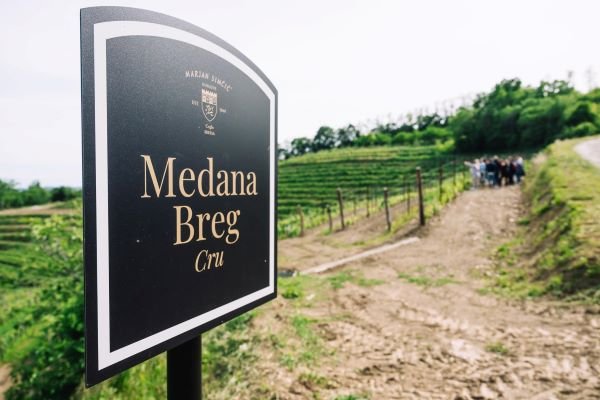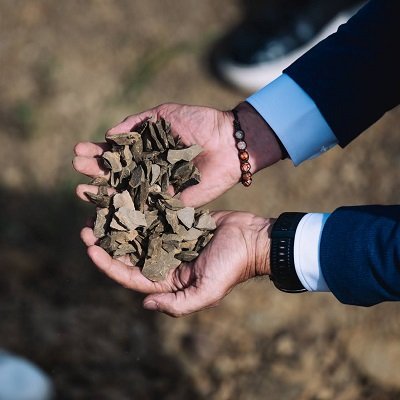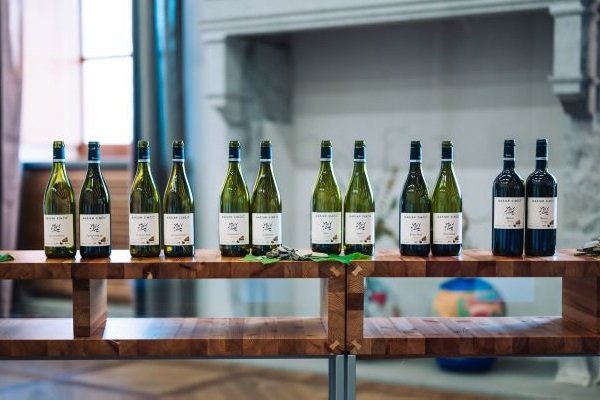The meeting between Slovenian winemaker Marjan Simčič and Friulian agronomist Giovanni Bigot helped further raise the level of this winery’s wines. Fragrant, concrete, elegant wines-in a word, memorable.
I visited in Brda to Marjan Simčič, one of the most internationally established producers in the Slovenian wine scene. The occasion was used for the presentation of the first results achieved in the vineyard and cellar as a result of the collaboration between Simčič and Giovanni Bigot, agronomist and inventor of the Bigot index. So I explain about Marjan Simčič and the Bigot method:

I arrived with one hundred questions to ask, over the course of the event I must have asked about three hundred, and left with five hundred more. This confirms the fact that wine is a complex system, and when you also take viticulture into analysis you create discussion material that could suffice for the next 30 years. Leaving aside my five hundred questions, which I reserve the right to ask those concerned in the near future, I prefer to focus on what is clear to me instead.
Memorable wines
What is certain is that M. Simčič’s wines are very good. In some ways truly surreal so much they manage to be concrete, memorable, elegant and three-dimensional. The choice since 2006 is to harvest, vinify and bottle individual vineyards. In this regard, the following were identified five cru, characterized by altitudes, exposures, soil composition (both in terms of the nature of the soil and its biodiversity), age of the vines and varieties. Each cru is monocultivar, so each cru corresponds to a different grape variety, whether white or red. Simčič’s viticultural landscape reflects that of the area, 70-80% white grapes versus a minority percentage of red berries.
The grapes are quickly named: Sauvignon Blanc, Sauvignon Vert (aka Friulano, formerly Tokai), Chardonnay, Ribolla (or better called Rebula), for the reds Merlot and Pinot Noir.

Brda is in fact the Slovenian counterbalance to Collio. Territory with a strategic geographical location, almost equidistant from the Julian Alps to the north and the sea to the south. Vineyards on hills or medium hills, pandering as far as they can to natural slopes. Where this is not possible man’s work intervenes with wise terracing To level the considerable slopes. Temperature excursions, sea influence, rainfall and slope, as well as biodiversity and an unmistakable soil,
opoka
in Slovenian, determine country and cellar choices.
The company of Marjan Simčič
In this setting, Marjan Simčič’s family has been working the land and making wine for five generations (with actually the sixth at the checkpoints). Total hectares 24, including 14 in Slovenia and 10 in Italy. The wines are identifiers not only of a tradition with roots far back in time but also of man’s willingness to keep them alive and bring them back to life.
Into this scenario, from 2020, comes the collaboration with Giovanni Bigot and his team at Perleuve (4grapes). An experienced agronomist who has worked in the vineyard since 1998, he founded his own consulting firm in 2012. He has been working alongside Marjan for four years applying good vineyard practice in order to enhance the characteristics of each cru.
The Bigot method
Now we come to why I leave with more questions than I had or could have asked. It goes without saying that comparing five crus each cultivated with a different grape variety is rather difficult; comparisons cannot be made. In fact absurdly It is easier to detect assonances than differences, for example in terms of salinity at the palatal level.
From what I understand the Bigot method, trying to simplify, puts together several factors in order to Enhance the aromatic component of the grapes, Preserving wholesomeness and biodiversity in the vineyard. Mens sana in corpore sano, I would be inclined to say … in a nutshell the concept is. wine is made in the vineyard yes, but with analytical data in hand. Compounded perhaps by tyrannical time to these data we did not have access to or were unable to comment on them, however significant were Simčič’s words in responding as to what was the added value highlighted by the, albeit recent, collaboration.
For Simčič, knowledge is the basis of everything, and Bigot’s approach has allowed him in recent years to become even more intimate with his extraordinary (there is even a 94-year-old) vineyards. Knowledge goes hand in hand with security, today the company has even more consciously espoused The certified organic approach. All with an eye to the future where there is already Leonardo, Marjan’s son, 27 years old and a future as a winemaker already written.
Wines and their aromatic component

Let us then come to the wines and this aromatic component. Forget everything you know about the Sauvignon Blanc, Marjan’s tastes of apricot and tobacco peach. Whether vintage or with a few vintages behind it, always intact it shows no failure. Salty is the right term for the Sauvignon Vert, almost nervous. Lo Chardonnay is Burgundy style: buttery, pleasantly citric, with splendid evolution on the nose and elegant presence on the palate; it sits there in the middle and then flows away quickly (preview 2021 remarkable).
And then Ribolla, which shuffles the cards on the table. Rebula is the wine where cellar technique comes into its own most. Here, aided by the prolonged maceration (although over the years the duration is shortening to go against “new” tastes), it is mainly the cellar technique that gives the wine its identity. Talking about maceration for me, who am from Verona, is like talking about withering; so are these wines made in the cellar and not in the vineyard? Not exactly, the viticulture continues to play a leading role, it simply changes the perspective. As if (let’s be clear this is my personal reading) the countryside practice in this case serves to produce grapes no longer (or not only) to make wines that taste of terroir, but grapes suited to give wines that are children of a certain technique. Complex topic, maybe I will elaborate on it another time.
Then the reds, where the Pinot Noir has elegance and great drinkability without lacking in complexity. But it is the Merlot Conquering. Deep, complex and exceptionally smooth on the palate. Velvety tannin frames it perfectly in a textbook expression of red and black fruit.
The future

…and little Simčič? Roll up your sleeves, Leonardo, is already experimenting. He made his first 1,300 bottles of a macerated wine, Numerals, from predominantly Sauvignon Vert and 20% Ribolla. Vinified separately with a month of maceration in clayver and then returned to the same container “to get to know each other better.” Leonardo chose to experiment right away with maceration to follow a trend that, by his own admission, is already changing. In fact, when asked “what do your peers drink,” he has no doubts. They want fresh and more immediate wines. This is probably the direction his wines will take.
Theory also confirmed by Anze Kristan, sommelier of the Pri Lojzetu restaurant, of Tomaz Kavcic chef patron, who oversaw with his impeccable and tireless staff the worthy closing of a busy day. Rich in questions, certainly, but also full of certainties from yesterday, today, but especially for tomorrow.
If after reading this article you, like me, have more doubts than certainties, try reading the tasting notes. Let’s see if at least, in addition to doubts, I can also make you thirsty.





